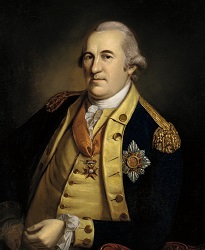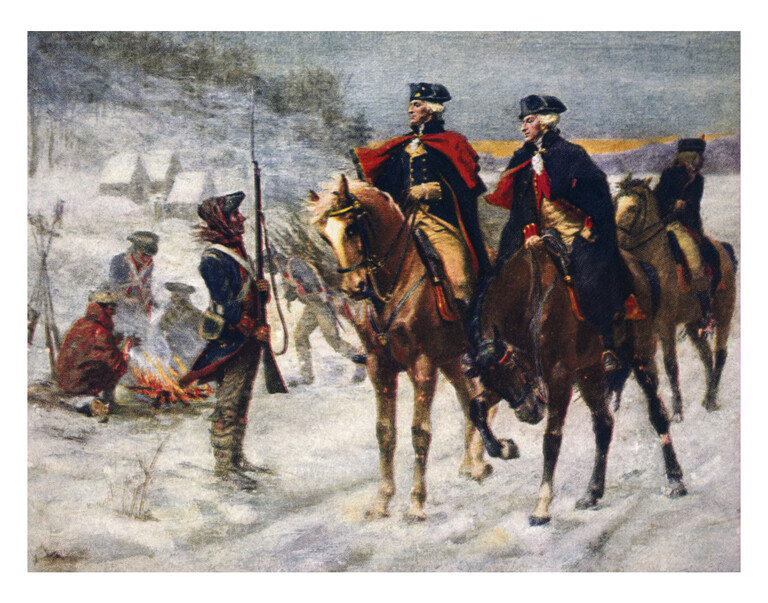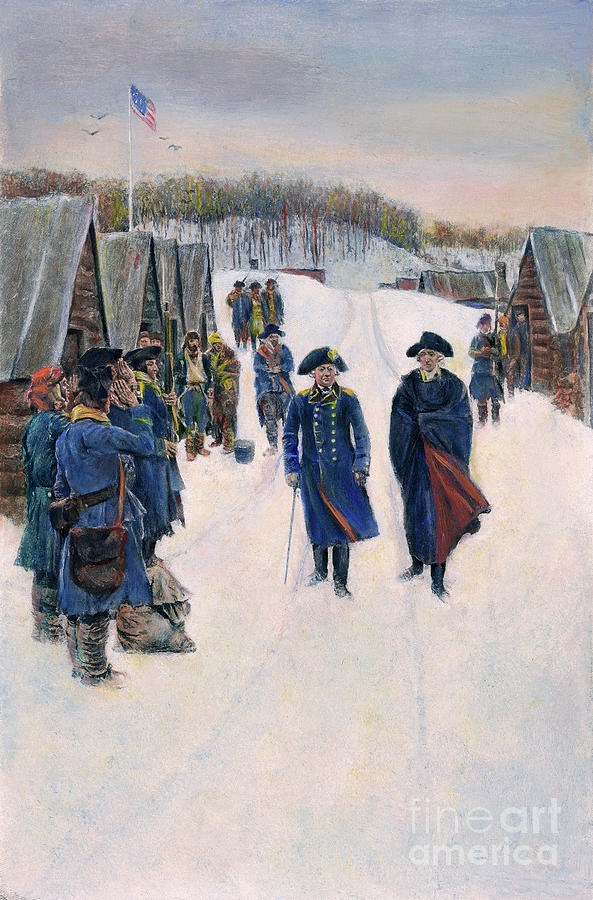
Thomas Jackson’s great grandparents were criminals. John Jackson and Elizabeth Cummins were both convicted of larceny in England and were punitively dispatched to the New World in 1749 alongside 150 other convicts. On the voyage across the Atlantic, John and Elizabeth fell in love.
Once their obligatory bond service was complete in 1755 they were married. Their grandchild Thomas Jonathan Jackson was born in 1824 in Clarksburg, Virginia. He was the third child of Julia and Jonathan Jackson. In his youth, Thomas went by the nickname “The Real Macaroni,” though the origins and significance of that term are not well understood.
Typhoid took his six-year-old sister in 1826 and his father some three weeks later. The boy’s remaining sister Laura Ann was born the day after her father died. Thomas and Laura Ann were close as children, but Laura Ann ultimately sided with the Union. Thomas grew to become a Confederate General of some renown. As a result, their relationship remained fractured until his death.
Military Service

Thomas Jackson entered the US Military Academy in 1842. Jackson’s lack of formal education hamstrung him upon his arrival at West Point, but his legendary dogged determination compensated. He graduated 18th out of 59 in his class of 1846.
Jackson got his formal introduction to war in Mexico. As a young officer, he distinguished himself at Chapultepec. For a decade starting in 1851 he taught at Virginia Military Institute where he was unpopular with his students. Along the way he was twice married. His first wife died in childbirth. His second, Mary Anna Morrison, lived until 1915. When the South seceded in 1861 following the attack on Fort Sumter, Thomas Jackson threw his lot in with the Confederacy.
In July of that year, Jackson commanded a brigade at the First Battle of Bull Run. At a critical moment in the fight, Jackson beat back a determined Union assault. Barnard Elliot Bee, himself a distinguished Confederate General who ultimately lost his life in combat, referred to Jackson as a “stone wall” in the face of the enemy. The name stuck.
After an initial setback attributed to flawed intelligence, Stonewall Jackson dominated the Shenandoah Valley campaigns of 1862. Through truly exceptional tactical acumen, Jackson and his troops defeated three separate Union armies in the field. He exercised his martial gifts at places like Harper’s Ferry, Antietam, and Fredericksburg, developing for himself a reputation as a cunning and insightful combat leader. At Chancellorsville Jackson’s 30,000 Confederates launched a devastating surprise attack against the Federal flank that drove the Union troops back fully two miles.
The General’s Theology
Thomas Jackson has been described as a fanatical Presbyterian. His deep and sincere faith drove everything about his life while making him all but fearless in battle. He once opined, “My religious belief teaches me to feel as safe in battle as in bed. God has fixed the time for my death. I do not concern myself about that, but to be always ready, no matter when it may overtake me…That is the way all men should live, and then all would be equally brave.”
Like most exceptional personalities, Jackson was also a bit strange. He held a lifelong belief that one of his arms was longer than the other. He would frequently hold the perceived longer of the two aloft for long periods in an effort at equalizing his circulation.
General Jackson highly valued sleep and was known to fall asleep at times while eating. His prior service as an artillery officer had severely damaged his hearing. This made communication difficult at times. He also had an abiding passion for fresh fruit like peaches, watermelons, apples, and oranges. His real weakness, however, was lemons. When they could be found Jackson would frequently gnaw whole lemons in an effort at soothing his digestion. General Richard Taylor, son of President Zachary Taylor and a colleague, wrote, “Where Jackson got his lemons ‘no fellow could find out,’ but he was rarely without one.”
Stonewall Jackson and Slavery
No information age treatise of a prominent Confederate can be complete without dragging slavery and race into the narrative. In the late 1850s, Jackson owned six slaves. Three of these–Hetty, Cyrus, and George–were received as part of a dowry from Mary Anna’s father upon their marriage. Two others supposedly requested that Jackson purchase them based upon his purported kindly local reputation. Of the two, Albert was purchased and worked to gain his freedom. Amy served as the Jackson family cook and housekeeper. The sixth was a child with a learning disability who was received as a gift from an aged widow.
In what was considered a fairly radical move for the day, in 1855 Jackson organized and taught Sunday School classes for blacks at his Presbyterian Church. Of this ministry, Pastor William Spotswood White said, “In their religious instruction he succeeded wonderfully. His discipline was systematic and firm, but very kind…His servants reverenced and loved him, as they would have done a brother or father…He was emphatically the black man’s friend.” I obviously cannot speak to what any of that was really like, but Reverend White was clearly a fan. Not diminishing the repugnant nature of slavery as an institution, but it was clearly a different time.
The Death of Stonewall Jackson
After a wildly successful engagement against Joe Hooker’s forces during the Battle of Chancellorsville, Jackson and his staff were making their way on horseback back through friendly lines. They encountered sentries from the 18th North Carolina Infantry who mistook the party for Union cavalry. The pickets shouted, “Halt, who goes there?” but fired before receiving an adequate response.
Frantic remonstrations from the command group were answered by Confederate Major John D. Barry’s command, “It’s a damned Yankee trick! Fire!” During the course of the two volleys, Stonewall Jackson was struck three times.
Two rounds shattered Jackson’s left arm. One ball entered at the left elbow and exited near the wrist, while another struck his left upper arm three inches below the shoulder. A third ball struck his right hand and lodged there. Several members of Jackson’s staff along with their horses were killed. The poor visibility and incoming artillery fire added to the confusion. Jackson was dropped from his stretcher at least once during the subsequent evacuation.
Battlefield medicine during the Civil War was unimaginably crude in comparison with today’s state of the art. The standard treatment in the face of significant damage to an extremity was amputation. As there were no safe and effective anesthetics available these surgical procedures were typically fast, frenetic, and fairly imprecise.
A Confederate surgeon named Hunter McGuire took the arm, and Jackson was moved to the nearby Fairfield Plantation for recovery. Thomas Chandler, the plantation owner, offered the use of his home. However, Jackson, ever concerned about imposition, insisted he be maintained in a nearby office building instead.
The germ theory of disease had not yet come to drive battlefield surgery, so secondary infections of combat wounds were ubiquitous. Jackson developed a fever and pneumonia as a result of his injuries and succumbed eight days later. As the end approached he said, “It is the Lord’s Day; my wish is fulfilled. I have always desired to die on Sunday.”
General Jackson’s final words, uttered in a delirium immediately preceding his demise, lend further insight into the man’s character. Attended by Dr. McGuire and a trusted slave named Jim Lewis, his final words were, “Order A.P. Hill to prepare for action! Pass the infantry to the front rapidly! Tell Major Hawks…” Then he paused and uttered, “Let us cross over the river, and rest under the shade of the trees.” Stonewall Jackson then breathed his last.
The fatal bullet was ultimately recovered and identified as a .69-caliber projectile. Union troops in this area typically fielded .58-caliber weapons. The 18th North Carolina Infantry was most commonly armed with older larger-caliber muskets. This discovery sealed the suspicion that Jackson had been felled by friendly fire. This was one of the first incidents wherein forensic ballistics identification was used to establish the circumstances surrounding a violent death.
While the American Civil War ultimately saw the introduction of cartridge-firing repeating rifles like the Henry and Spencer, most combatants on both sides were armed with single-shot, muzzleloading rifled muskets of various flavors. Union troops had the luxury of greater standardization due to their more advanced state of industrialization, while Confederate units frequently had to make do with a hodgepodge of weapons. Regardless, in this particular circumstance, the science of ballistics told an unfortunate tale.
The Rest of the Story
Upon learning of his friend’s injury Confederate General Robert E. Lee wrote, “Could I have directed events, I would have chosen for the good of the country to be disabled in your stead.”
He sent this message to Jackson via a courier after his surgery, “Give General Jackson my affectionate regards, and say to him: he has lost his left arm but I my right.”
When told of his death Lee confided to a friend, “I am bleeding at the heart.”
The Battle of Gettysburg took place a mere two months after the death of General Jackson. As any student of Civil War history will attest, Gettysburg was an iffy thing indeed. The entire outcome of the war potentially turned on a handful of decisions made under the most arduous of circumstances.
Had Stonewall Jackson been at Lee’s side during the chaotic maelstrom of Gettysburg the battle might very well have turned out differently. Had Lee’s Army of Northern Virginia been able to take the day and subsequently march on Washington, Lincoln could have been forced to sue for peace on the steps of the White House at the point of a Confederate bayonet. Had that been the case our world would obviously be all but unrecognizable today. Sometimes the most momentous events turn on the smallest things.
Ripping down historical monuments in a fit of emotion strikes me as viscerally unsettling. In 2001 the Taliban blew up the 6th-century Buddhas of Bamiyan and were rightfully reviled as a result. It really should be possible to appreciate historical figures without dogmatically embracing the causes they represented or obliterating the evidence of their existence.
For all have sinned, even in modern woke America. If left intact alongside contextual information these monuments could serve as object lessons to enlighten generations yet to come. If freedom from moral stain becomes a prerequisite for veneration then I fear we may be destined to become a nation bereft of monuments.



